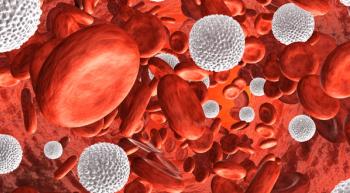
Decreasing Cancer Costs and Re-Admissions, Increasing Satisfaction
An easy-to-implement nurse-driven program can decrease the number of hospital readmissions, lowering costs and improving patient satisfaction.
Unplanned hospital readmissions can be extremely costly for both care facilities and patients. A slim 5% of patients who frequently head back to the hospital (called “super-utilizers”) may be responsible for up to 50% of healthcare costs.
However, a method called healthcare hot-spotting, which opens the doors of communication between nurses and patients on the oncology unit, was proven to decrease costs and readmissions, while also improving patient satisfaction.
At the
How Hot-Spotting Works
First, Perry and his team identified super-users, who had risk factors such as high-risk disease, significant comorbidities, or hospital admissions within the last 6 months. Nurse practitioners then conducted morning phone calls to these groups twice a week to see how they were doing, and if they had any medical questions or issues that needed to be addressed.
“If there was a problem, they would get them in to be seen that day, or get them in to see a specialist,” Perry said in an interview with Oncology Nursing News. “Our experience was that a lot of patients had problems leading up to this that they wouldn’t necessarily tell anyone about, so the nurse practitioners would coax this out of them, so that it could be taken care of before they actually needed to be admitted.”
One common problem included chronic or extreme fatigue, that could be a sign of severe anemia. Oftentimes, Perry mentioned, patients would not call their providers about this until later in the afternoon, when it was too late for an infusion.
Patients also opened up about having low-grade fevers, constipation, or dehydration, that the medical staff could take care of much more efficiently in the earlier stages.
“I think in general, patients don’t want to complain,” Perry said. “They think things will get better on their own, but oftentimes they don’t. So, by making this intervention and reaching out to them — instead of them contacting us – we were able to avoid a lot of these problems.”
Lower Costs, Improved Satisfaction
After the program was implemented, there was a decrease in admissions for patients enrolled in the Oncology Care Model (OCM) from 21.3 patients per 100 to 18.7 patients per 100 — a 12.2% decrease. Inpatient costs went down from $979 per beneficiary per month (PBPM) to $885 PBPM – a 9.6% decrease, this was “presumably because we were taking care of problems before they became more substantial,” according to Perry.
“In addition, our patient satisfaction scores improved significantly,” he said. “I think it’s because there was very frequent contact between our nurse practitioners and our patients. They were speaking to them twice a week in addition to their regular visits, so there’s ongoing rapport.”
Perry also mentioned that the nurses enjoyed the program as well, as it provided meaningful interactions with their patients.
Looking Ahead
Moving forward, Perry said that he would like licensed practical nurses (LPNs) to initiate the phone calls, and then have nurse practitioners follow up, if need be. This can be implemented in oncology care settings across the nation, as long as there is the staffing capacity to do so.
Perry’s team did not use any intricate technology or programs to run the program — telephones were essentially all that were needed.
“The most important point for nurses to take away is the fact that this is something they can do in their own program, if they have the capacity in their schedule,” Perry said. “This is something that can really make a difference. It gives pleasure and job satisfaction [to nurses], so I think it would be a wonderful thing for them to do.”
Newsletter
Knowledge is power. Don’t miss the most recent breakthroughs in cancer care.
















































































